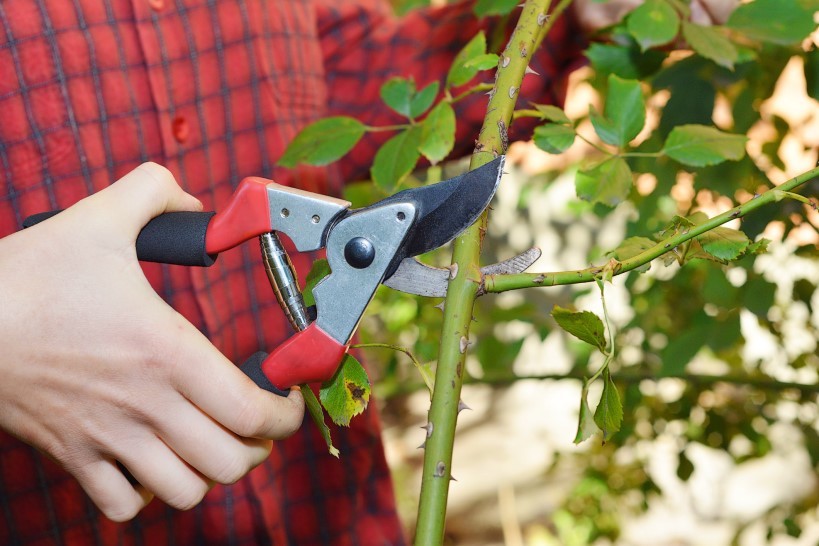By Rachael Leverton
Pruning Power
Pruning is a word which can instil fear into the heart of a novice gardener.
I often get asked when to do it; how to do it, and how extensive it should be?
Rarely do I get asked WHY do we do it?
While a shrub won’t die if it isn’t pruned, it might grow too large for the space, or become straggly, or produce poor quality flowers. So, gardeners prune in order to enhance a plant’s performance; to encourage it to produce better foliage, flowers, or fruit. Pruning forces a plant into ‘growth mode’ as it tries to replace what it has lost.
When should we prune?
There are two main pruning seasons: autumn and spring. Shrubs that flower in the winter, spring and early summer generally produce their flowers on old wood, which is any stem that grew the previous year. These shrubs need to be pruned in the autumn.
Shrubs that flower in mid-summer or autumn tend to produce their flowers on this season’s growth, which means on stems that were produced this year. These shrubs should be left until spring before pruning.
There’s no magic or mystery involved: we’re working with the natural inclination of the plant. If the foliage and flowers are produced on new wood, then it makes sense to encourage the plant to produce as much of this as possible. It also makes sense to prune in the spring because any new growth in the autumn would be vulnerable to frost.
Many autumn-pruned plants benefit from ‘the rule of three.’ My grandfather taught me this and it means that each year, in the autumn, after the shrub has flowered, you prune out one third of the oldest shoots. This encourages new growth the following spring while still allowing the shrub to flower on the old wood. Treated this way, the shrub will be completely rejuvenated every three years but will flower every year.
Pruning is best approached with a clear purpose. What is your aim? If a reshape is in order and you’re only partially shortening a stem, always prune to an outward facing bud which encourages a nice, open shape. As I’ve already mentioned, pruned plants will do a lot of growing, which means they’ll expend a lot of energy, hence all pruned plants need a good feed in the spring, before the growing season gets underway.
Finally, if you do get it completely wrong, don’t panic. Generally, the worst that happens is that the plant looks a bit naff for one season then bounces back the following year. That’s the good thing about plants: they just keep on growing.
Rough Guide to Pruning
Prune in spring
Buddleia, perovskia, dogwood, caryopteris, lavender, roses, fuchsias
Prune in autumn
Cotinus, forsythia, winter jasmine, philadelphus, spiraea, weigela, deutzia

